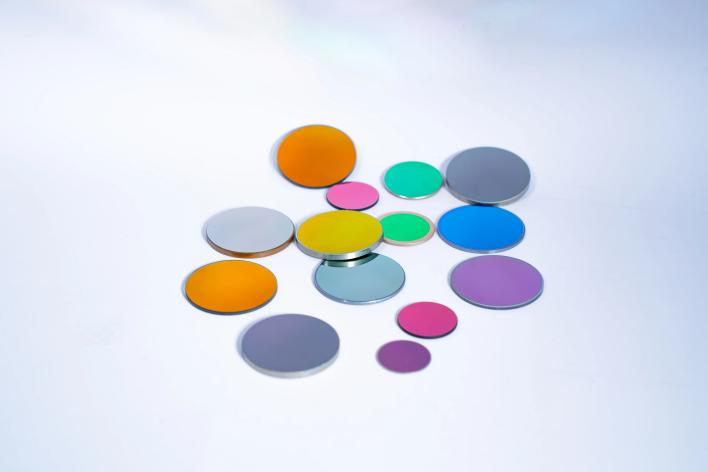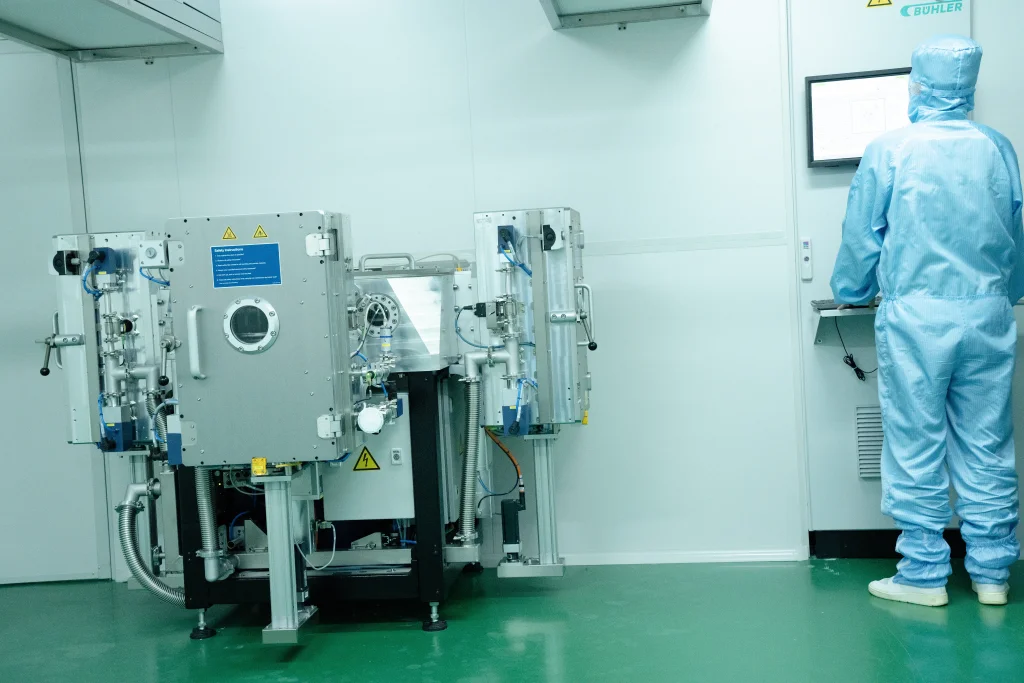Thermal noise is a big problem for infrared detectors. It makes them less sharp and accurate by mixing up weak signals. This guide looks at where thermal noise comes from and how cool infrared filters—using neat materials, coatings, and designs—can help fix it. You’ll learn how awesome filter tech boosts signal strength, making detectors work better for things like gas testing and defense tools.

What Are the Sources and Mechanisms of Thermal Noise in Infrared Detection Systems?
Thermal noise, sometimes called Johnson-Nyquist noise, comes from electrons moving around because of heat in a detector’s parts. In infrared systems, this noise is a big deal. It messes with the tiny infrared signals you want to catch. Heat in the detector’s stuff makes random signals that act like real ones, so your results aren’t as clear.
In uncooled detectors, thermal noise is worse because they work at room temperature. For cooled detectors, cold tech helps a lot, but leftover heat from nearby parts—like filters—can still add some noise. If a filter isn’t made right, it can send out its own heat, which adds to the background noise and lowers the signal-to-noise ratio (SNR). This makes the detector less sharp.
How Does Thermal Noise Affect Detector Sensitivity and Accuracy?
Even a little extra thermal noise can hurt how well a detector works. Infrared systems need strong signals to stand out from background noise. When filters or other parts give off heat, they hide weak signals from faraway or faint objects.
This is a big issue for things like gas detection or far-off spying, where signals are already super small. Infrared filters are like tiny lenses that hold big smarts. If they’re not designed well, they can make extra heat feedback, which lowers clarity and messes up measurements over time.
How Can Spectral Selectivity and Cut-off Characteristics Reduce Thermal Noise?
To cut down thermal noise, you need filters with super sharp passbands. These let only the right wavelengths through and block extra heat. Strong cut-off edges stop long-wavelength heat from hitting the detector.
In visible light or near ultraviolet, there are lots of glass filters that work great. But in infrared, it’s trickier. Filters often use many layers to get sharp cut-offs. These layers help block unwanted heat outside your focus area.
For example, a long-wave pass filter for mid-wave infrared (3–5 µm) needs to block heat beyond 5 µm. If it doesn’t, room-temperature heat will mess up your measurements.
What Is the Role of Filter Materials in Managing Thermal Emissions?
Choosing the right materials is key to keeping heat low. Materials like germanium or zinc selenide give off less heat. You can add special coatings to make them even better at stopping extra heat.
Some infrared materials work as shortwave-pass filters. They have edges that match the wavelengths you need and keep heat low. The purer the material, the less it makes heat from light hitting it. This helps keep the detector clear.
How Do Coating Structures Influence Thermal Emissivity?
Special coatings with many layers don’t just control light—they also keep heat low. By using layers that don’t soak up much light and bounce back heat at certain wavelengths, you can stop extra heat from forming.
Bodian’s infrared filters use smart ideas and careful designs. They’re made with high-tech tools to get super precise coatings. These work well in hot or cold settings.
How Can You Optimize Filter Design for Specific Infrared Applications?
You need to match the filter’s light range to what your project needs. For gas testing, you might want narrow filters for specific lines, like 3.3 µm or 4.2 µm. For imaging, wider ranges work better to catch more light.
Bodian has cool new filters, like infrared narrowband and broadband filters. By lining up the filter’s range with your detector’s best spot—and blocking all other light—you get the strongest signal and keep heat out.
Why Is Minimizing Out-of-Band Leakage Critical for Noise Suppression?
Out-of-band leakage is when extra light sneaks through outside your target range. Even tiny leaks at longer wavelengths can add a lot of heat noise because of how heat works at room temperature.
To stop this, you can:
Use multi-cavity Fabry-Pérot designs.
Add layers that soak up extra light.
Combine long-pass and notch filters.
These tricks make sure only the right light hits your detector, keeping heat noise low.
What Are the Benefits of Multi-Layer Interference Coatings in Infrared Filters?
Multi-layer coatings give you awesome control over light. They help with:
Sharp edges for clean light cut-offs.
Strong light flow in the right range.
Less wavy noise outside the main band.
These coatings let you make hybrid filters, like band-pass ones with built-in blocking. They do multiple jobs in one small piece without making things complicated.
What Makes Bodian’s Infrared Filter Technologies Stand Out?
If you’re working on super important infrared systems where every bit of light matters, Bodian has the best answers. Their filters are made with top-notch tech, like ion-assisted evaporation (IAD) and plasma-enhanced sputtering (parms). These make super stable coatings with low heat for mid-wave and long-wave infrared bands.
Bodian’s filters work great in gas analyzers, night vision gear, and more. Whether you’re using cooled or uncooled detectors, their custom filters don’t add extra heat or mess up the light.
Which Filters Should You Choose for Cooled vs. Uncooled Detectors?
Cooled detectors need super narrow bandpass filters to match their cold setup. These need strong blocking (>OD5) to stop warm parts from adding noise.
Uncooled detectors work at room temperature, so they need low-heat broadband filters. These avoid extra heat while letting in enough light for things like spying or car safety systems. Bodian’s infrared broadband filters are perfect for this.
What Solutions Are Available for Mid-Wave vs Long-Wave IR Bands?
Mid-wave infrared (MWIR: 3–5 µm) needs materials like sapphire or silicon with narrow coatings for clear windows or gas lines.
Long-wave infrared (LWIR: 8–12 µm) uses chalcogenide glasses or germanium to keep light clear without adding blur, even in tough weather. These are great for gas detection and defense tools.
Bodian’s custom filters match your detector and light range perfectly.
How Can You Customize Filters for Aerospace, Defense, or Industrial Applications?
Different fields need different things:
Aerospace: Filters that handle shakes and work in space.
Defense: Tough surfaces that don’t break under laser hits.
Industrial: Filters that resist dust or oil.
Bodian makes filters that fit into lenses or sensor packs, with coatings for tough places like the ocean or desert. These help environmental tools and defense gear work their best.

How Do You Measure Filter-Induced Noise Suppression Effectively?
To check how well filters cut noise, you can look at:
Signal-to-noise ratio after adding the filter.
How much extra light is blocked, tested with FTIR spectroscopy.
Heat tests that mimic real-world use.
These tests show if the filter stops unwanted light while keeping your signal strong.
Why Is Environmental Stability Important Over Time?
Filters in changing weather, like hot or wet conditions, need to stay steady. If they peel or shift, they won’t work right, especially in places where you can’t fix them easily.
Bodian tests filters with tough conditions, like UV light, heat, or salt fog, to make sure they last in places like the sea or desert.
How Do You Validate System-Level Performance Using Advanced Filters?
To make sure filters work in real systems, you can:
Test image clarity with special heat sources.
Check contrast-to-noise ratios in real lighting.
Look at long-term changes over many uses.
These steps make sure Bodian’s filters really help in the field, not just in theory.
FAQ
Q1: What makes low-emissivity coatings essential for infrared filter design?
A: Low-emissivity coatings keep filters from making their own heat. This helps keep the signal-to-noise ratio strong in sensitive infrared systems.
Q2: Can one type of filter serve both MWIR and LWIR applications?
A: Some special optical filters are feasible, but they require customization.
Q3: Why do uncooled detectors need specially designed filters?
A: Uncooled detectors work at warmer temperatures. They need low-heat broadband filters to avoid extra heat while letting in enough light.

